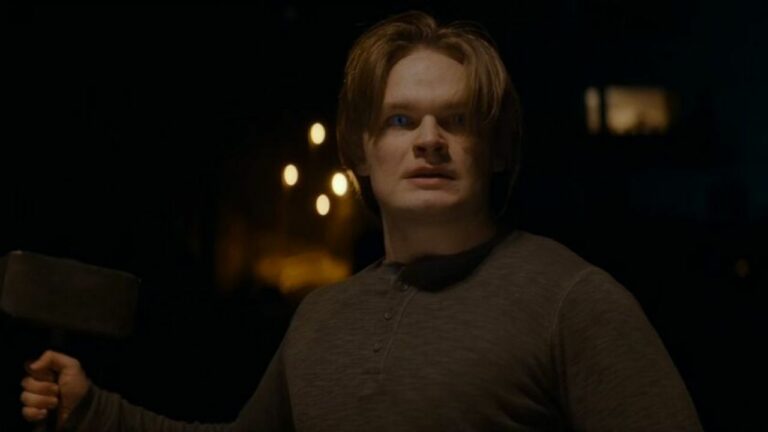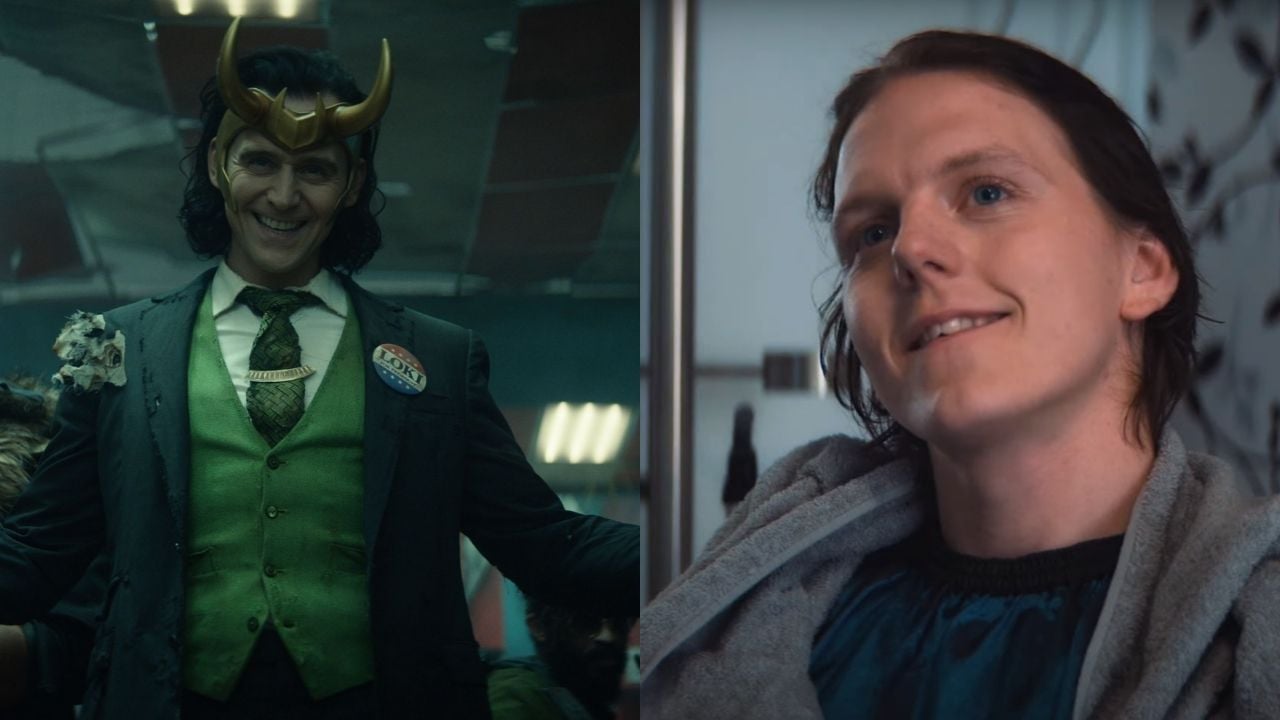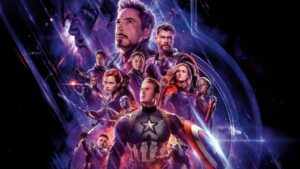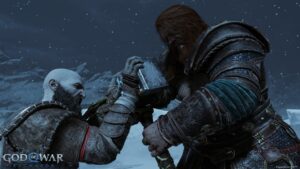When someone mentions Thor or Loki, any normal person would instantly recall Chris Hemsworth’s abs or Tom Hiddleston’s long black locks and charm. But it looks like they’re not the only popular Norse gods in town. A Netflix original Norwegian show, titled Ragnarok, is retelling their own modernized version of the end of the world mythology.
Superhero Gods of Marvel’s Asgard
Of course, Marvel’s rendition of Thor is a stylized version of the Norse Mythology, and hence it is cool and has all the qualities of a superhero + god any comic fan wants to see on the big screen.
It retains many aspects of the original Norse mythology. However, the writers sometimes need to change many things to shape the characters to fit them better in the world of superheroes.
They’re Gods. They’re awesome. They’ve been here for thousands of years. And Loki ‘unlocked’ the multiverse, so I’m not complaining.
Teenage Climate Crusaders of Netflix’s Ragnarok
Ragnarok on Netflix is not necessarily as cool as the MCU version, but it is a modern take on the old Gods and how they’d fit in today’s world. The series has Thor and other Norse Gods reincarnated as teens, and their powers have to be awakened by a magical necklace.
The series shows that the world’s end doesn’t have to be meteors falling and crashing into our planet or a huge bang that’ll blow everything up, but how the planet is dying a slow death due to global warming caused by the big industries.
These kids have to prepare for Ragnarok while also going through a coming-of-age drama that evolves them for better or worse.
Character Comparison
1. Thor/Magne
In the MCU, Thor is a fully grown adult; he is an Asgardian and has these amazing powers from the get-go. Thor is popular, and everyone loves him. In Ragnarok, Magne’s powers are awakened by Wenche, an old lady, when he arrives in Edda. Magne is the unpopular kid who wears glasses and is an awkward teen till he gets his powers.
MCU’s Thor swings his hammer around and can fly into space. Whereas Ragnarok’s Magne is running everywhere. No, seriously, I’m pretty sure we could compile all the times Magne runs in the series into a solid 5-ish minutes clip. He does run faster than a normal human being, though.

Magne and Thor’s powers are pretty much similar. They include superhuman strength, speed, agility, the ability to influence thunder, and the only being who can lift and use Mjölnir (except for Captain America, apparently).
In the first film, Thor loses his abilities and has to ‘earn’ his powers and, in turn, being worthy of Mjölnir. In the series, Magne also loses his powers for a brief period but gains it back when he forges the god-killing weapon himself in the eternal fire. In the end moments of S2, Saxa, one of the giants, also mentions how it’s very heavy and that she couldn’t even lift it off the ground.
2. Loki/Laurits
Loki and Laurits are both charming in their own ways. The beloved trickster (who isn’t quite that beloved in the Mythology) is known as the God of mischief, and these two characters are more similar to each other than Thor and Magne.
In the MCU, as a baby, Loki is adopted by Odin and only later finds out that he’s a giant and son of Laufey. In Ragnarok, Vidar is revealed to be Laurits’ father, making him a half-giant and Loki. However, he becomes half-God when he injects Wotan’s (reincarnation of Odin) blood into himself, making him Odin’s blood-brother.

MCU Disney+ series Loki confirmed Loki to be genderfluid via his file at the TVA. Ragnarok revealed this in a much more interesting way by having Laurits give birth to Jörmungandr (the World Serpent).
Loki and Laurits are both unpredictable, and it is hard to root for him when you can’t figure out whose side he’s truly on. We’ve seen MCU’s Loki shapeshift plenty of times, but Laurits is yet to display this ability.
One significant difference between the two was that Laurits doesn’t crave power. He just wants people to be honest with him and care for him, but he’s disappointed every time. However, MCU’s Loki was always hungry for power, but eventually the Disney+ series amended that aspect by equating him craving power to just a way of feeling accepted among literal Gods.
3. Odin/Wotan
In MCU’s first Thor movie, Odin loses his eye in the battle with the Jötunn (the Frost Giants). Even though in Norse mythology, Odin loses his eye to Mimir in exchange for one drink from Mimir’s well, which contains all wisdom and knowledge. Which was also how Netflix’s Ragnarok also gave its Odin/Wotan this power.

In the series, Wotan rejects Laurits, leading him to inject his blood and making Loki Odin’s blood-brother. In the MCU, they just have a complicated father-son relationship.
MCU toes the Mythology line by marrying Odin to Frigga. Odin eventually dies of old age in Thor: Ragnarok. On the other hand, Ragnarok keeps Odin alive, but it’s worth noting that in the myth, the wolf Fenrir (that Loki fathers) kills Odin during the final battle of Ragnarok.
But seeing how the show doesn’t deviate much from the Mythology, only executes the fates in a different manner, perhaps Odin/Wotan might die in the upcoming seasons.
4. Frost Giants/Jutuls
In the MCU, the Frost Giants are the race of large humanoid beings that inhabit the frozen, barren realm known as Jotunheim.
Their counterpart in Ragnarok, The Jutul family is the fifth-richest family in Norway and owns the factories making the town’s water toxic and polluting the environment. They are later explained as being the ‘leftover’ giants of Jötun who are now living as humans in Edda.

In a rare overlap, both Loki and Laurits are sons of the patriarchs. MCU’s Loki is the son of Laufey, (hence, ‘Laufeyson’) whereas in Ragnarok, Laurits is a half giant via Vidar, the head of the giants.
Other Gods
1. The goddess Sif
Lady Sif is in love with MCU’s Thor, but our guy has the hots for an American astrophysicist, Jane Foster, in the films. In Norse mythology, Thor is married to Sif, the goddess of the harvest.
Sif is known for her flowing golden hair and is depressed when Loki cuts her hair off as a prank. Later on, Loki gets the dwarves to make Sif new hair (cue that one scene in the Loki series when he’s in his time loop cell).
In Ragnarok, Magne also has a crush on a girl named Gry, but she rejects him for the school’s popular guy, Fjor (who is also one of the Giants). But Season 2 saw Magne turning his attention towards Signy (who has golden hair and, I predict, is definitely gonna be Sif in Season 3).
2. Freyja
Associated with love, fertility, war, and magic, Freyja is traditionally known for her beauty and ability to enchant any being.
Ragnarok reincarnates Freyja as Iman, Wotan’s part-time caretaker and Magne’s schoolmate. Iman plays an important role in helping Magne forge Mjölnir, as she manages to hold off Fjor while the hammer is forged in the basement of his factory.

However, Frigga/Freyja in the MCU is Thor’s biological mother and doesn’t display much of her powers, except for some illusions and tricks.
3. Týr
Týr is the God of war in Norse and Germanic mythologies, known for his excellent combat abilities and war manipulation.
Týr is present in the MCU, but he doesn’t really have a significant role. In the Netflix series, Týr is reincarnated in Harry, a mechanic who owns an auto repair shop in Edda.
In the myth, Týr sacrifices his hand to the wolf Fenrir in battle. However, the series shows Harry lose his hand during a fight with Fjor, and this sacrifice allows Magne to escape with Mjölnir.
Fate of the Gods In Both Universes
Ragnarök means ‘Fate of the Gods’ in Old Norse. The story of Ragnarok comes from the Poetic Edda, an ancient collection of poems from the 13th century.
Almost all of the gods and giants die in this great battle, except for a few, including Vali, Baldur, Hodr, and Thor’s half-giant sons: Modi and Magni. According to Norse mythology, a single man and woman survive Ragnarok, and they repopulate the planet.
Now, this wouldn’t exactly be ideal for carrying forward the MCU storylines, so instead, we see the end of Asgard, Thor’s planet, in Thor: Ragnarok. Thanos kills Loki in Infinity War, but then we got the Loki variant and his redemption arc in the Disney+ series, which unleashed the multiverse.
The upcoming Thor: Love and Thunder will supposedly see Jane become Lady Thor, so I wouldn’t expect it to follow the Norse Mythology roots anymore, what with the multiversal war and everything.
The Ragnarok series, however, might stay true to the mythology if Netflix decides to renew it for another season. Season 2 ended with Laurits releasing his serpent into the lake, indicating that Ragnarok has officially begun. Perhaps we might see Magne, Laurits, Odin, and all the other gods die at the end.
That ending would kind of suck. I’d rather see them lose their powers somehow and live the rest of their days as humans if they absolutely HAD TO lose something during the battle.
About Marvel Cinematic Universe
The Marvel Cinematic Universe (MCU) is an American media franchise and shared universe centered on a series of superhero films and TV series, independently produced by Marvel Studios and based on characters that appear in American comic books published by Marvel Comics.
The franchise includes comic books, short films, television series, and digital series. The shared universe, much like the original Marvel Universe in comic books, was established by crossing over common plot elements, settings, cast, and characters.
Damn! No streaming services found :/
About
Jujutsu Kaisen, Ch. 141: Itadori’s in for the fight of his life against an unknown foe with deadly powers! Read it FREE from the official source! https://t.co/oPrMqU61p5 pic.twitter.com/HRPLL2YPOJ
— Shonen Jump (@shonenjump) March 7, 2021









No Comments on How MCU Norse Gods vs Ragnarok (Netflix) Compare To Original Mythology